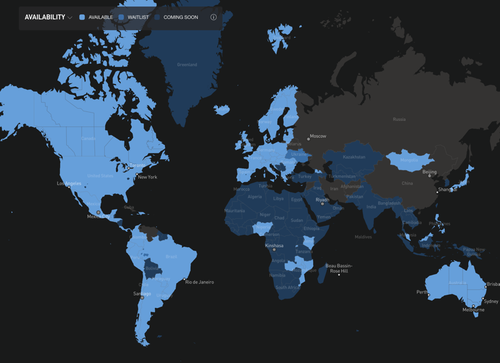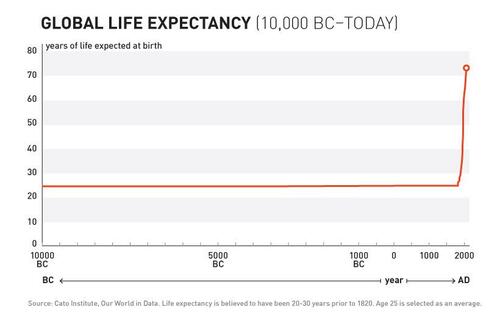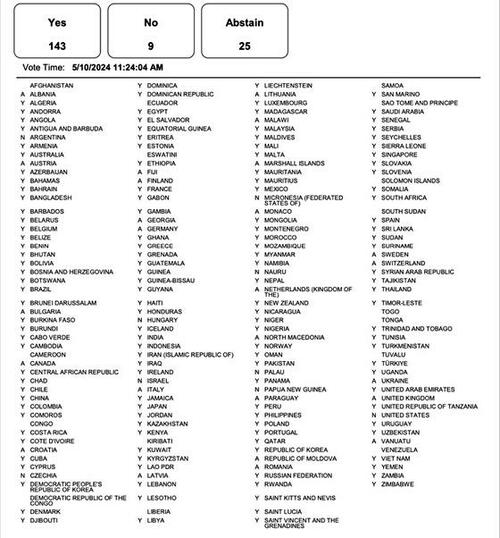Authored by Nick Corbishley via naked capitalism,

At a time when the dominant narrative around cash is that its demise is all but inevitable, as well as broadly desirable, the 2024 payment report by Sweden’s Riksbank may offer a cautionary tale.
In October last year, in More Good News for Cash in Europe, More Bad News for Digital Dollar in US, we reported that recent developments suggest that the trend away from cash and toward purely digital-only payment systems may not be quite as smooth or as seamless as some may have wished or expected. One of the developments we highlighted in that report was growing concern among central bankers and politicians in Sweden, one of Europe’s most cashless economies, about the unintended consequences of driving cash out of the economy:
Even by late 2020, Sweden had less cash in circulation than just about anywhere else in the world, at around 1% of gross domestic product, according to the latest available data. That compares with 8% in the U.S. and more than 10% in the euro area. As a recent piece in Interesting Engineering notes, Sweden is already “officially cashless”:
Cash is never needed, not even for small purchases like hot chocolate at a Christmas market in Stockholm. All vendors have a mobile payment chip-and-PIN card reader like the one offered by Stockholm-based mobile payments company iZettle, or they accept payments through the mobile application Swish. Swishing is perhaps the easiest way of payment for everyone.
The Risks of Going Fully Cashless
But now the country is beginning to realise that an almost exclusively digital payments system comes with significant risks, especially at a time of heightened geopolitical tensions. In time-honoured fashion, the article in the UK Telegraph began with a spot of fearmongering about Vladimir Putin.
“People started to realise that it is very easy for Vladimir Putin to switch everything off,” Björn Eriksson, a retired police chief, former head of Interpol and leading cash advocate, told the Telegraph. “At first we were arguing for vulnerable people, the elderly, women in abusive relationships who rely on cash… Now we are talking about national security. And it’s not only Putin, it could also be organised crime.”
In 2021, the Riksbank, Sweden’s central bank (and the world’s oldest), introduced a new directive obliging the country’s six largest credit institutions to continue providing their customers with certain basic cash services.
But while that may have meant that people in Sweden can continue to access cash from their local branch, it is becoming increasingly difficult to use it as fewer and fewer retail businesses accept notes and coins.
This is partly due to the greater convenience of handling digital payments while the card processing fees are substantially lower than the US. But it is also because most Swedes, including many pensioners, prefer to use cards or mobile payments. As a baker in Stockholm told the Telegraph, “the only people who bring cash to the shop are tourists. I feel bad for them because they just take the krona home, where it is useless.”
But even that trend may be reversing. According to Eriksson, a growing number of young people are joining the pro-cash movement — and mainly over privacy concerns.
Rediscovering the Benefits of Cash
Earlier this week, Heise Online, a German online news service that covers IT, telecommunications, and technology sectors, published a long, in-depth report about the Riksbank’s apparent rediscovery of some of the benefits of cash. The article also explores some of the Riksbank’s concerns about the potential fragility of a fully cashless payment system, as outlined in its 2024 Payments Report, published in March.
At a time when the dominant narrative around cash — as espoused by senior bankers, central bankers, big tech and fintech executives, politicians and economists, and of course, their ever-faithful servants in the media — is that its demise is all but inevitable, even in countries where cash is still King (Germany, Spain, Austria, Mexico, Thailand, Japan…), the Riksbank’s report may offer a cautionary tale. From the Heise Online piece (machine translated):
“The Swedish payments market has been digitized rapidly,” states the Riksbank. Cash and manual payment services have been replaced by cards, mobile phones and internet services. “As a result, payments have become faster, smoother and cheaper overall,” which the institute points out is “a positive development.” However, there are groups in society “who do not have access to digital payment services or find it difficult to use them and are therefore marginalized”. There are also “serious fraud problems that could undermine trust in the payment system.”
Digitalization also makes payments “more vulnerable to cyber attacks and disruptions to the power grid and data communication,” the bank points out. At the same time, the geopolitical developments of the past few years required “Sweden to have strong civil defense.” The developments suggested “that we should concentrate more than before on the challenges of digitalization.”
Put another way, cash does not crash. It does not fail in a power cut or seize up during a cyber attack (though, of course, ATMs might). By contrast, digital payment systems need a stable and continuous internet connection to process transactions. When these connections fail, the result is often chaos. Digital payment outages have caused significant disruption in a host of countries in recent years, including the US, the UK, Australia, Indonesia, Germany, Canada, Spain and Norway. Generally speaking, the more cashless the country, the greater the disruption.
Sweden’s Cashless Journey
Sweden is one of the world’s most cashless economies. In large part, its abandonment of cash was the result of technological and generational shifts. As payment technologies began to change in the first two decades of this century, most Swedish citizens began to prefer the speed, ease and convenience of digital payments.
They were also nudged heavily in that direction by commercial banks, which by 2016 had made 60% of their branches cashless, as a 2019 Riksbank working paper documents. This made it much more difficult for citizens to access cash and for businesses to deposit it, which in turn accelerated the uptake of digital payments and the abandonment.
Sweden’s legal tender laws also made it possible for the Riksbank to withdraw many of Sweden’s large denomination notes in circulation. For instance, the value of 1,000-krona notes (worth just over $90) in circulation declined gradually from SEK 48.4 billion in 2001 to SEK 21.4 billion in December 2012. Beginning in 2013, this decline accelerated, plunging to SEK 9.7 billion by December 2013.
After playing a part in the wholesale removal of cash from Sweden’s economy, the Riksbank is now trying to reverse some of the damage it has caused. It is not the only Scandinavian central bank to have flagged up the fragility risks of exclusively digital payment systems. In 2022, the Bank of Finland recommended that the use of cash payments be guaranteed by law. Like all Nordic countries, Finland is a largely cash-free economy. But like Sweden, it has begun to see the risks of going too far, too soon.
In March 2022, the central bank initiated a proposal for legislation to ensure a minimal level of cash-paid services. In October of that year, the Head of the Payment Systems Department and Chief Cashier at the Bank of Finland, Päivi Heikkinen, even advised households to make sure they have some cash on hand, just in case the country’s payments system were to go down. At the time, Finland had just applied to become a NATO member and the government was fretting about the risk of cyber attacks from Russia. In an interview with the national broadcaster, Heikkinen said her intention was not to ”fabricate catastrophic scenarios” — before saying that in the worst case scenario, the payments system could go down for a period of weeks.
In Sweden, the Riksbank is already taking countermeasures to try to guarantee a steady supply of cash, the Heise Online article notes:
It is improving the cash supply by setting up new offices where companies can collect and deposit cash. Having such cash depots in more locations across the country would reduce both the costs for businesses and the risk that cash would no longer be usable in the event of a disruption.
This is the only way to ensure “that everyone can pay”. In general, “stronger legal protection for cash” is necessary. Banks should be required to “accept cash deposits, including coins, from individuals.”
The Riksbank supports its demands with reference to an annual representative survey on the payment habits of Swedes. According to this, “cash is being used more frequently than before”. Almost half of respondents reported using cash in the past month, an increase of 15 percentage points compared to 2022.
This pro-active approach to bolstering the cash system contrasts sharply with what some central banks and governments are saying and doing in other Western or Western-adjacent countries. As we reported in August, Brazil’s Chamber of Deputies is mulling a number of legislative proposals calling for an end to the printing, minting and circulation of physical notes and coins. As the World Economic Forum trumpeted in 2022, Brazilians are adopting digital payments faster than anyone else.
In Australia, the government refuses to legally protect the use of cash in retail settings. The Governor of the Reserve Bank of Australia, Michele Bullock, has even warned that as the running costs of processing cash for banks and businesses mount as a result of the declining share of consumer payments made using cash, it may become necessary to begin charging people for using cash in retail settings.
Granted, Australia is significantly larger and more sparsely populated than Sweden, making it much harder and more costly to transport money securely to all parts of the country, including remote parts of Queensland, Northern Territory and Western Australia. But whereas the Riksbank is talking about taking on a proactive role, together with other authorities and banks, to ensure that cash can be transported to and from retail outlets at reasonable prices, the RBA is talking about making consumers pay for the privilege of using cash. Meanwhile, Armaguard, Australia’s largest currency transport business, servicing around 90% of the cash-in-transit market, is warning of bankruptcy — unless the banks agree to pay more for its services.
Predictably, Bullock’s suggestion that citizens may one day have to fork over extra fees for the privilege of paying with cash — to protect the banks and retailers from the exorbitant costs of maintaining cash infrastructure — did not go down well with many Australians. While most citizens are using digital payments for most, if not all, of their purchases, millions still depend on cash in their daily lives.
What’s more, the very same Big Four banks Bullock wants to protect from having to part with extra money to fortify Australia’s cash network have posted record or near-record profits in recent times, in part because of surging interest rates but also because of the rising fees they charge on card payments. Those same banks received huge sums of cheap debt to tide them over during the COVID-19 pandemic while at the same time closing hundreds of branches and ATMs across the country.
In Sweden, as Heisse Online notes, more and more Swedes see the decline in cash consumption as a negative development — 44 percent in 2023 compared to 36 percent in the previous year:
The proportion of respondents who believe that they cannot get by without cash in today’s society has also increased compared to 2022. This could also be “an effect of increased crisis awareness due to the war in Ukraine,” the bankers speculate.
The need to pay in cash in certain situations such as at clubs, in corner shops and at flea markets is also mentioned, the report goes on to say. Some also emphasized that using cash made it easier for them to keep track of their finances. Older people generally find it much more difficult to get by without cash than younger people. In the 2023 survey, half of respondents said they wanted to pay cash but the store did not accept it. In 2022 the corresponding value was only 37 percent…
These numbers suggest that cash may be experiencing a mini-renaissance in Sweden, which would echo similar trends seen in other heavily cashless economies. For example, a recent survey down under by fintech company Waave revealed that as many as 71% of Australians are worried about the economy becoming completely cashless. Those most concerned include Baby Boomers (82%), regional Australians (77%), and lower income households earning less than $100k (75%) — a reminder of the oft-ignored class-war element of the War on Cash.
It’s not hard to see why concerns about the future of cash are on the rise down under. In recent months, three of Australia’s Big Four banks have removed over-the-counter cash withdrawals from some of their branches while increasing numbers of businesses, both large and small, are choosing to reject cash payments altogether. In Australia, it is perfectly legal for businesses to refuse to accept cash as long as they inform consumers of their stance before any “contract” for the supply of goods or services is entered into.
Aussie cash lovers recently expressed their displeasure with these trends through a “Draw Out Some Cash Day” on April 2. According to news.com.au, hoards of people were seen lining up to withdraw cash:
The movement, led by the Cash is King Facebook group, aimed to show banks and retailers there is still a demand for cash amid warnings the country will be “functionally cashless” by 2025.
Social media posts show “massive queues” of people, both young and old, lining up at various banks around the country, with one woman sharing she waited for up to an hour to get her hands on bank notes.
“All banks I passed today had queues out the door,” one person wrote on Facebook alongside a picture of people lining up outside a Commonwealth Bank branch.
Governments in other countries, including Ireland, Spain, Slovakia and Austria, are taking pro-active steps to protect the use of cash. Even the European Central Bank has called for a regulatory crackdown on all businesses and public bodies in the Euro Area that refuse to accept cash. At the same time, the ECB is proceeding in its digital euro project from the “investigation phase” to the “preparation phase.”
As I noted at the time, cash is still the most frequently used payment method in the Euro Area, though it is losing ground to cards. Even if, or when, the digital euro is launched, it will presumably coexist with cash for some time, at least until the digital euro gains a strong enough foothold. ECB President Lagarde has said that “cash is here to stay,” adding that European citizens “will have both options: cash and digital cash.” How long it stays that way will remain to be seen. My guess is that if the digital euro does gain a strong foothold, the ECB will begin financially incentivising its use while decentivising the use of cash.
In the UK, meanwhile, cash may even be staging a comeback of sorts after ten consecutive years of falling use. According to both UK Finance, the country’s largest bank association, and the British Retail Consortium Group, the most influential retail lobbying group, cash use increased in 2022, for the first time in a decade. Whether this rebound represents a genuine trend reversal or merely a dead cat bounce (apologies, as always, to feline lovers) remains to be seen. But the mere fact that cash use is growing at all despite concerted efforts by the government, banks and retailers to reduce its use is noteworthy.
So, too, is the fact that Sweden’s Riksbank is expressing reservations about the resilience of a fully cashless society. After all, the Riksbank was one of the first central banks in Europe to begin aggressively undermining the role of cash in the economy. That said, its U-turn on cash it is not as novel a development as is suggested by the Heise Online article. The Riksbank, the article claims in its introduction, “is suddenly emphasising the indispensable role of cash in secure, widely available payment systems. This is a change in strategy.”
That is somewhat misleading. As the German financial journalist Norbert Häring notes (in German) on his blog, while there has definitely been a sea change in strategy at the Riksbank, that change did not begin just now but rather eight years ago, “after the central bank, together with Sweden’s commercial banks, had done everything they could to undermine the use of cash.” Since early 2016 Sweden’s central bank has slowed the march towards a cashless society, as Häring reported at the time.
Now, the Riksbank is not just questioning the wisdom of moving to a fully cashless economy at this current moment in time; it is explicitly warning about the potential risks such a move might entail. At the same time, it is working on developing a CBDC — the so-called e-krona, now in its fourth and final pilot phase, looking at “how an e-Krona can be used offline for payments if electricity and telecommunications are not working.” Which begs the question: once the e-krona is ready to launch, which will presumably be sooner than most other CBDCs in the West, how will it co-exist with cash? That will have to be the subject of a future article, though readers’ suggestions are more than welcome in the meantime.











